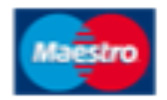
Current facts about translation
Translation and globalization are big business—and the field of service providers comprises some big and growing businesses. 2017 saw some massive movement among large companies in the space, but smaller businesses had a place in the market as well. Lots of startups in tech have emerged, including countless marketplaces and hybrid Machine Translation tools.
Nowadays, worldwide language services market are growing at an annual rate of 5.52%. According to the Centre for Next Generation Localisation, this industry is the 4th fastest-growing industry in the US. Common Sense Advisory, leader in research data, says which provides highly regarded research data on the industry, estimates a database of 18,000 provider firms worldwide.
This year, a slowdown in the US economy is positively affecting the translation industry. Balancing demand with budget means that more companies bring some of this talent in-house. The US Bureau of Labor Statistics reports that more than 3,000 firms employ over 55,000 professionals in various aspects of language services. Also, more than 50,000 people work as translators and interpreters.
At the same time, more small businesses are producing and translating educational content. Because of this, translators and foreign-language copywriters are becoming more an extension of a marketing team, rather than an outsourced vendor. The goal is now to build a global content team—not just find a transactional translation vendor.
Some of the key facts to consider are:
Overall global language industry in 2016 was estimated at USD$40 Billion and is estimated to be USD$45 Billion by 2020.
In 2018, the projected growth rate is 6.5-7.5%.
The size of the language technology industry is estimated at €29 billion.
The Localization industry is also embracing agile in order to continuously deliver new localized content to global audiences. As content continues to go more digital, knowledge of international digital localization strategy is much more critical than ever before. Whether companies have the resources internally or they prefer to partner with an external provider, content marketers need to know how to manage a wide range of localization issues, including how to optimize search internationally, how to bundle language-related devices for multiple markets, how to drive cost-effective and efficient ways to manage multilingual communications, and, most importantly, how to measure the success of multinational digital communications.
One of the most talked about technologies in the content localization space has been machine translation using neural networks and other forms of AI. Great strides have been made with machine translation for decades, although several recent improvements and developments in neural machine translation and adaptive machine translation are providing potential for many more compelling applications.
However, technology companies are finding it hard to exist in an industry that doesn’t like to buy a lot of software. Research groups place the total translation services spend in the USD$40 billion range, while technology (i.e., tools, gizmos, online translation sites) does less than USD$200 million collectively.
Another important trend is the high demand for translation to southeast Asian languages. There is a big push towards southeast Asian languages like Malay, Thai, Vietnamese, and Indonesian. These emerging economies are boosted by China’s large Belt and Road initiative.




